Revolving Doors: A Greener, More Secure Environment
| Active Wing Sensor Pattern |
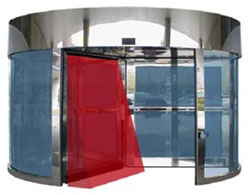 |
| Active Entry Point Sensor |
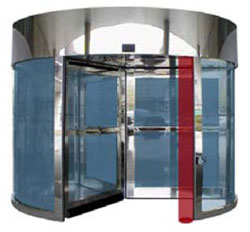 |
| Safety Edge Passive Sensor |
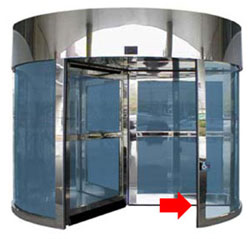 |
Manual revolving doors
The primary safety control of the manual revolving door is limiting the rotating speed using either a canopy or floor mounted speed device. The maximum allowable speed is 12 revolutions per minute.
Automatic revolving doors
Automatic revolving doors are furnished with a series of active and passive sensors. The sensors used are similar to that used for automatic swinging and sliding doors. Automatic revolving doors are activated by a canopy-mounted motion detector. Below is a brief description of the safety standard for automatic revolving doors:
For door wing safety, ANSI 156.27 Section 16.1 requires the sensors to detect a 28 inch high person in the rotating path a minimum of 10 inches in from the wing.
Automatic revolving doors also require entry point sensors to prevent entrapment at the intersection of the rotating wing and the approaching drum wall. The ANSI code calls for active entry point sensors, which shall detect the presence of a person or object when the door wing approaches the drum wall and stop the rotation.
In addition to the wall sensor, the drum edge farthest from the rotating wing is furnished with a contact safety edge. This edge, according to ANSI 156.27 section 17.1, is required to detect any obstruction of 10 pounds of force or greater and immediately stop the door rotation. This redundant protection ensures enhanced safety to pedestrians and peace of mind to business owners and overall traffic.
The bottom rail of the wing is typically furnished with a “toe guard” sensor. This sensor, according to ANSI 17.2, is designed to detect an obstruction no more than four inches from floor and with less than 10 pounds of pressure stopping the door rotation. It is intended to eliminate the possibility of a person’s heel being trapped under the wing.
Lastly, section 20.1 of the ANSI 156.27 code requires the furnishing of emergency buttons. These are designed to remove the power of an automatic door and must be located on both sides of door and stop door rotation until reset.
| Bottom Rail Passive Sensor | Emergency Buttons |
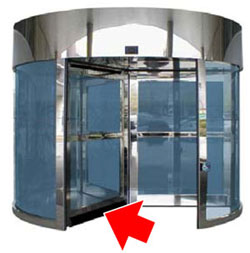 |
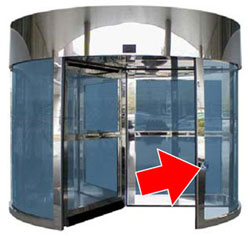 |









